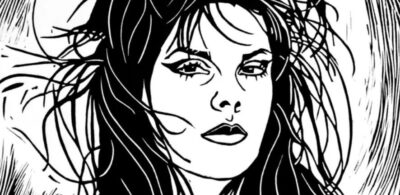Luigi’s Circle Jerk Army
On April 13, 2025, the antediluvian punk rock band from Los Angeles, the Circle Jerks, performed at the Coachella Valley Music and Arts Festival. Singer Keith Morris, a co-founder of the Jerks, told the concert goers: “What we do encourage, what would be totally f**king happening, would be an army of Luigis!“

Keith Morris founded the Circle Jerks in 1979, and the band played a large role in Southern California’s early punk scene. But what Morris blurted from the stage wasn’t punk rock, it was a call for cold blooded murder and terrorist action. I write this as one of the first punk rockers in the original 1977 Los Angeles punk scene. There are those who say Morris “deserves to be on the Mount Rushmore of US punk rock.” I’m not one of them.
In New York City on Dec 4, 2024, 28-year-old Luigi Mangione stalked 50-year-old Brian Thompson—the CEO of UnitedHealthcare, with the intent of murdering him. At daybreak in front of the New York Hilton Midtown, Luigi shot Thompson in the back using a 3D-printed pistol that was chambered in 9mm. Since the gun was 3D-printed, it had no serial number, making it untraceable. Thompson died from his wounds some twenty-minutes later, leaving behind his wife and two sons.
After a nationwide manhunt, Luigi was arrested in Pennsylvania. Authorities charged him with multiple state and federal charges; first-degree murder, second-degree murder, murder in furtherance of terrorism, stalking, use of a firearm in a crime of violence.. along with multiple charges for the illegal possession of firearms.
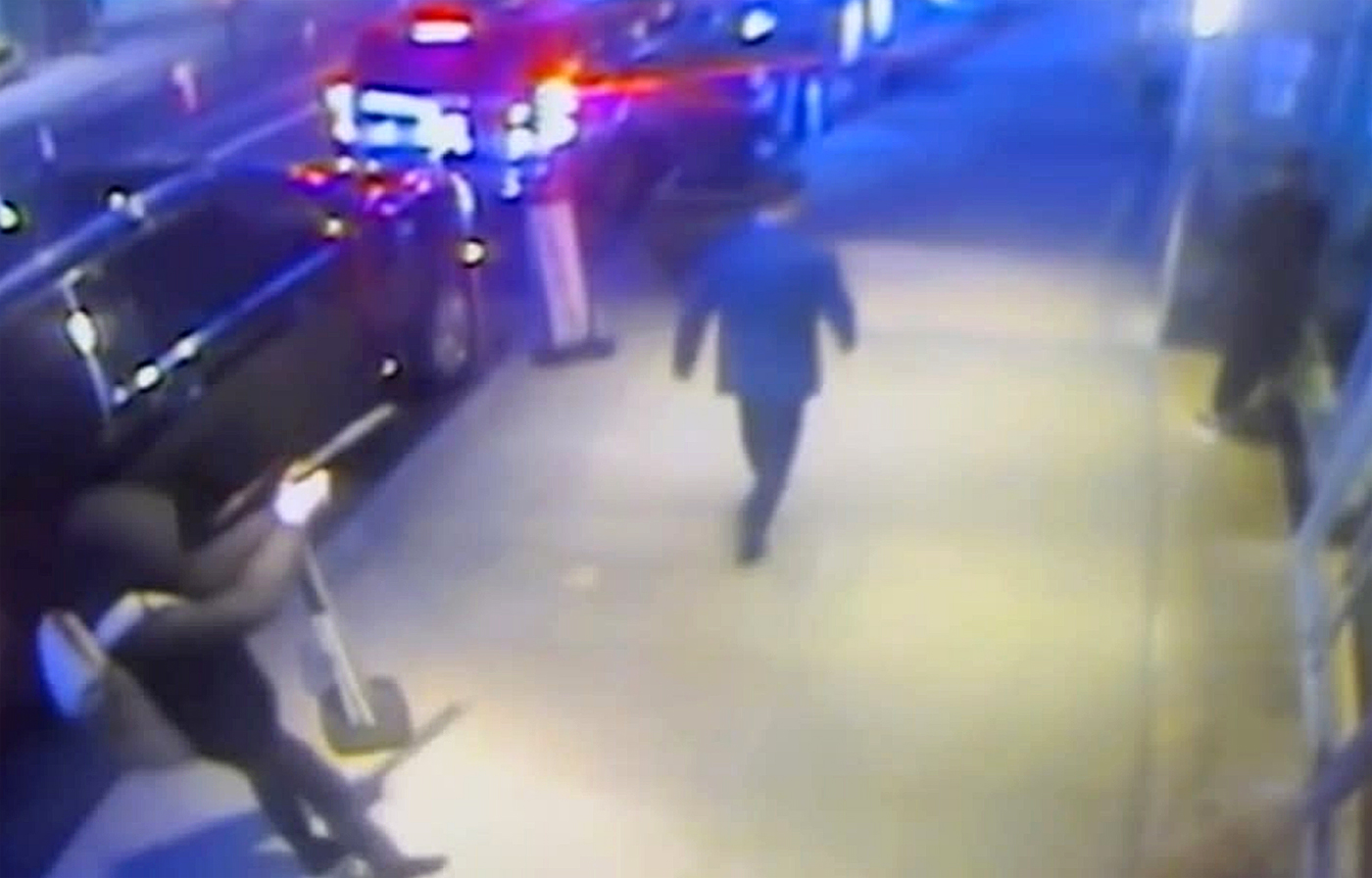
This wasn’t “I Fought the Law: and the Law Won,” the romanticized anti-authority song written by Sonny Curtis in 1958, released by The Crickets in 1960, and covered by the Clash in 1979. This was a real-life story of a heinous assassin named Luigi.
Numerous leftists instantly praised Luigi as an anti-corporate “freedom fighter” and “a hero of the people.” Assorted progressives said he expressed the righteous anger of the American people, who were sick of being ruled by elites. Many liberals insisted Luigi was a symbol of “justified violence.” Keith Morris evidently stands with this crowd.
A case in point. The 40-year-old liberal American “journalist” Taylor Lorenz, once wrote for the New York Times and the Washington Post. In 2024 she left the Post to become an unaffiliated social media “influencer.” After Luigi murdered Brian Thompson on a street in Manhattan, Lorenz said in an interview with CNN correspondent Donie O’Sullivan:
“You’re gonna see women especially that feel like, ‘oh my God, here’s this man who’s a revolutionary, who’s famous, who’s handsome, who’s young, who’s smart, he’s a person that seems like this morally good man,’ which is hard to find.”
So, these days you can be morally good after shooting someone in the back. That was once considered the mark of a coward—although murder is still murder. All the same, I’m glad to know the “rebel without a cause” Keith Morris stands with the likes of Taylor Lorenz. Still I wonder, after calling for “an army of Luigis,” do fans of Morris still consider him an admirable man?

I wonder what Keith Morris thinks about Luigi Mangione being used as a model by SHEIN, the Chinese fashion retailer. When the company realized Americans were idolizing Luigi, they posted to their website an AI advertising image of the killer wearing a short-sleeve button-down shirt from the Manfinity menswear company—a house brand sold exclusively on SHEIN. The shirts were selling on the website until a torrent of negative complaints forced a deletion of the offensive ad.
On June 22, 2023 the US Congressional Select Committee on the Chinese Communist Party, issued a report on two fashion manufacturers based in Red China—SHEIN and Temu. The report notes that both companies have used forced labor to produce their products, in violating of the Uyghur Forced Labor Prevention Act. There’s no evidence that links the shirts modeled by the fake Luigi to Uyghur forced labor, but I’m convinced applauding Luigi as a fashionista was bad enough.
We didn’t have to wait very long for Keith Morris’ call for an “army of Luigis” to attract an ultra violent and unbalanced recruit.
On Aug. 27, 2025, a 23-year-old transgender shooter—Robert “Robin” Westman, used a semi-auto rifle, pump action shotgun, and a semi-auto pistol, to shoot children as they prayed during the Catholic Mass in the pews of the Annunciation Catholic School in Minneapolis, Minnesota.
Westman never entered the building while firing more than 116 rifle rounds and 3 shotgun shells through the Church’s stained glass windows. The shooter killed an 8-year-old boy named Fletcher Merkle, a 10-year old girl named Harper Moyski, and wounded 14 children between the ages of 6 and 15, as well as injuring 2 parishioners in their 80s. After the gunfire, police say the killer used the pistol to commit suicide.
Authorities confirmed that Westman left behind two hand-written manifestos. The killer video-taped both of the documents page by page, and just before the Church massacre uploaded them to YouTube. After the killings they were quickly removed by YouTube, but not before copies were made and distributed across the internet. Townhall, a conservative news website, published both of the manifestos on its official X account.
I must forewarn you, the manifestos are not meant for kids. They are dark, demoralizing, unpleasant tracts to view and read. They are also proof positive the trans shooter was insane, possessed by the devil, or both.

The runtime of the first video is 20:38. It gives a readable view of the manifesto written in a dark red, ring-bound notebook. The first page is decorated with 6 full color adhesive stickers depicting Luigi, a character from Nintendo’s Super Mario franchise. Westman placed the Luigi stickers in the manifesto as a tribute to Luigi Mangione, the killer of Brian Thompson!
Hey, Keith Morris. Your army of Luigis is “totally f**king happening!” Are you happy with how its taking shape? Will you “encourage” the next horrendous shooting of innocents?
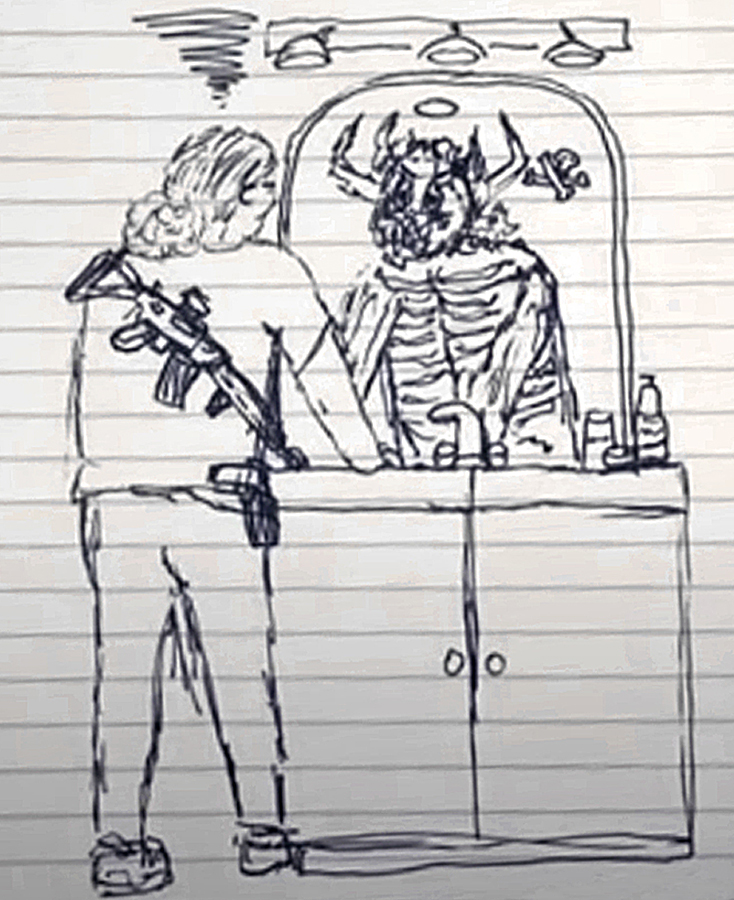
At 19:17 in the video, the shooter lingers on one of his drawings, it’s a self-portrait. A cartoon “Robin” stands before a mirror in a bathroom with a rifle slung around his neck and a pistol holstered on his belt. He peers into the mirror… his reflection is a horned demon.
At 19:45 in the video the shooter focuses on his hand-drawn layout of the Annunciation Church’s interior with altar and nave where the congregation sits. The shooter then violently stabs the drawing with a knife!
The shooter hand-wrote the entire manifesto in Russian Cyrillic letters. An account on X actually used AI to translate the complete manifesto into English. It’s an excruciatingly chilling read, filled with crippling self-loathing and intense misanthropic hatred.
“Robin” hated everyone, Christians, Blacks, Mexicans, Jews, every group was loathed except for one—mass shooters. The manifesto listed a number of lunatics guilty of perpetrating mass casualty events before killing themselves. One name included was 20-year-old Adam Lanza. On Dec. 14, 2012, Lanza shot to death 26 people at Sandy Hook Elementary School in Connecticut. Twenty of the dead were children between 6 and 7 years old. Robin idolized Lanza and wanted to follow in his footsteps because, as it was stated in the manifesto, the shooter yearned to make children suffer.
The second video opens with the shooter presenting four pages of taped together pages offering hand-written apologetics to friends and family… until Robin dumped a pile of 9mm rounds on top of the pamphlet. The shooter grabs a handful of the live bullets like a marauding pirate would seize gold doubloons, caressing and admiring them. The rest of the video displays the infernal arsenal to be used in slaying Christian children.
In English and Cyrillic Russian, the transgender shooter scribbled names and messages in white paint on the weapons and ammo magazines to be used in the killing spree. The names were those of mass casualty event shooters Robin venerated. The messages conveyed intense animus, a small example being… Kill Donald Trump, Kill Trump Now! Where Is Your God? Kick a Spic, Israel Must Fall, Burn Israel, 6 Million Wasn’t Enough, and Psycho Killer.
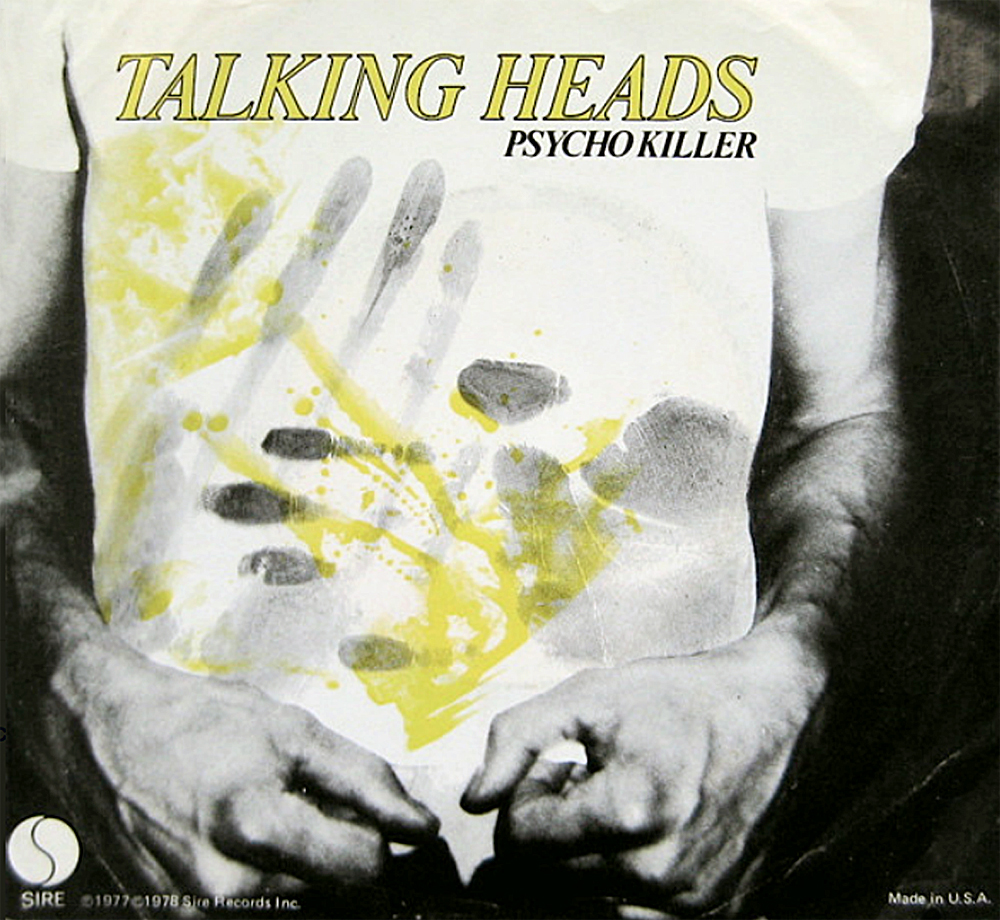
You may not know this, but… Psycho Killer was a song released as a 45 single in 1977 by the Talking Heads, the new wave band from New York. An eccentric anti-pop tune, it straddled the line between “art punk” and new wave. Psycho Killer underscored the angst of the time. Many thought the song was about New York City’s “Son of Sam” serial killer, David Berkowitz. However, the band’s frontman David Byrne wrote the song before Berkowitz terrorized the Big Apple with his .44 Special revolver.
I purchased the Psycho Killer song when it became available as a single in Dec of ’77. Its quirky eeriness heralded the beginnings of a challenging new music. Fast forward to 2025—I haven’t a clue as to what this song could have meant to a 23-year-old transgender murderer.
In the second video where “Robin” Westman displayed the weapons that would be used in killing children, I found a detail no one seems to have detected. Westman arranged the guns and their ammo magazines on a bedroom mattress. Also in the spread, a shooter’s glove, electronic earmuffs for hearing protection, and… a black T-shirt emblazoned with the logo of the Los Angeles punk band, FEAR. The shirt is prominently displayed at 8:27 in Westman’s video.
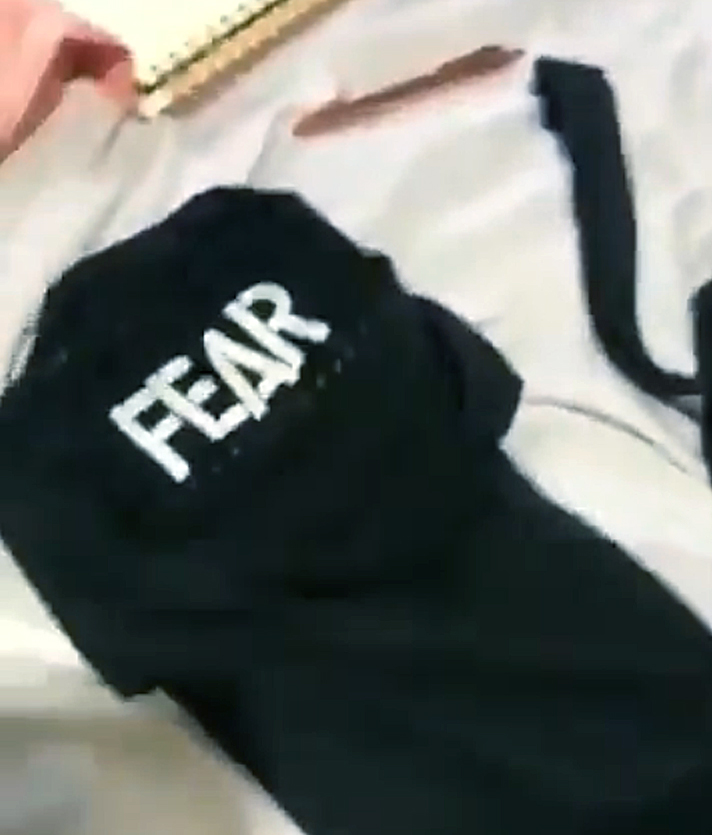
Founded in 1977 by singer Lee Ving and bass guitarist Derf Scratch, FEAR was one of the most notorious punk bands in the US. Ving had the persona of an ill-humored punk rock Marine Corps drill instructor, surly and forever taunting the audience. The rough-and-tumble band posed as anti-social goons. They were not a politically correct quartet, but they were improbably great musicians who galvanized the hardcore punk sound of California. I attended their LA concerts, and have the scars to prove it.
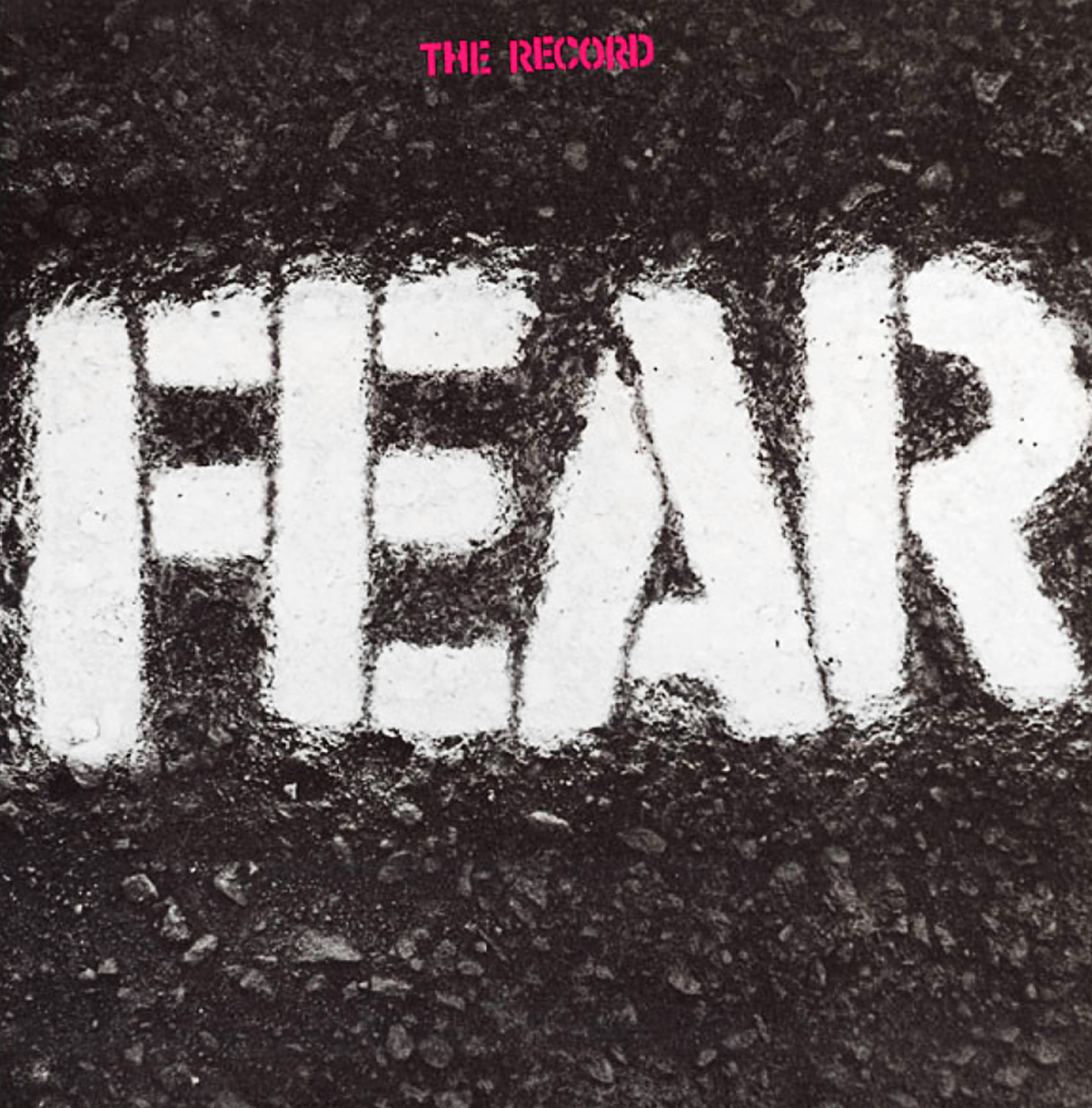
A highlight in the band’s insurrectionist style of performance occurred when American actor and comedian John Belushi arranged for FEAR to perform on Saturday Night Live on Halloween night, Oct. 31, 1981. The splendid English actor Donald Pleasence was appropriately picked as host for the broadcast. Despite have played in more than 250 stage, movie, and TV productions, he was known in the US for playing Dr. Samuel Loomis in the Halloween movie franchise. Mr. Pleasence introduced the band with the words: “They look very frightening, but they’re really very nice.”
When FEAR took the stage, suddenly the menacing slam dancing punk underground was on national TV for the very first time. The studio audience was terrified, and when the band began to feverishly play their song “Let’s Have a War!” the network cut to a prerecorded skit. America had never seen such a spectacle on TV. But again, for the life of me… I just can’t imagine what a band like FEAR could have meant to “Robin” Westman.
It’s an utterly bizarre concurrence of circumstances for the Talking Heads and FEAR to cross-paths with the likes of Westman, but history is full of improbable matches. Nevertheless, the hellishness of the shooter’s actions can never be blamed on these two vanguardist rock bands. However, the same cannot be said of Keith Morris and his call for “an army of Luigis.”
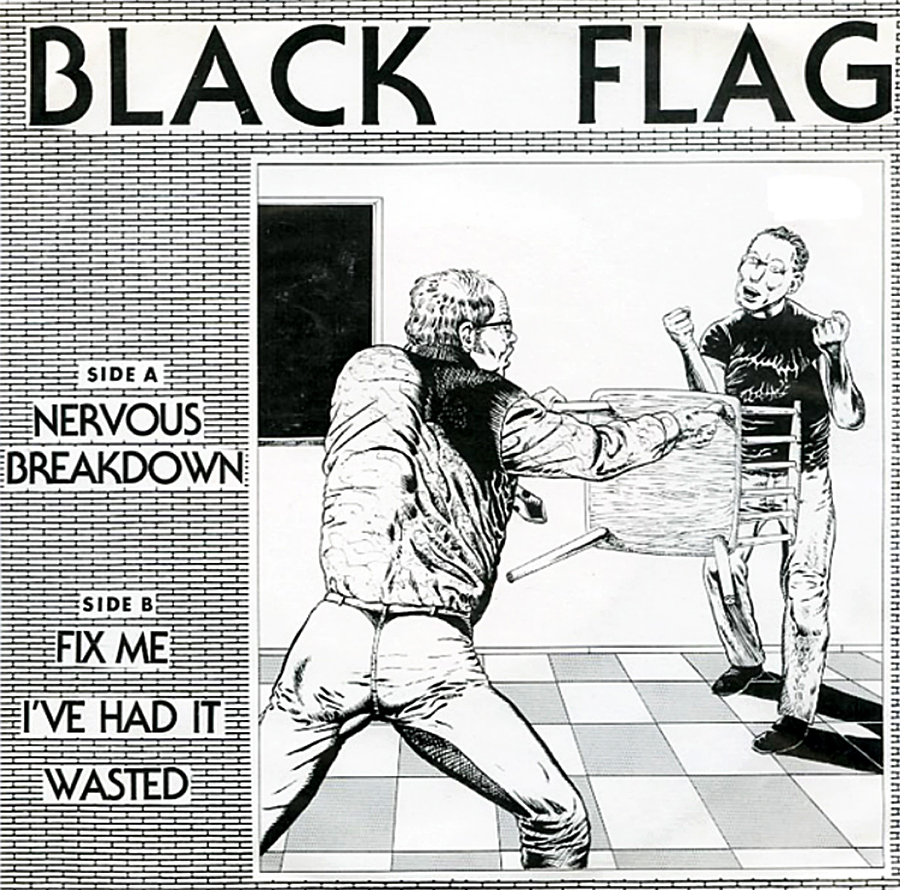
Keith Morris was the original singer for Black Flag when the outwardly nihilistic band first formed in 1976. He left the band in 1979 due to artistic differences, and founded the aptly named punk band, Circle Jerks. During its lifetime Black Flag had five different singers… but Morris was first.
In 1979 I attended one of the earliest Black Flag gigs in Lost Angeles. Since clubs had closed their doors to punk rock because of riotous behavior, the boys of Black Flag rented a squalid abandoned space for their performance. I got word of the gig by way of a Xerox flyer.
I don’t remember where the hole in the wall was located. It was a simple empty room with a concrete floor, a single light bulb hanging from the ceiling, and a large storefront window facing the street of a rundown neighborhood. There was no stage. Perhaps forty fellow punk rockers attended.
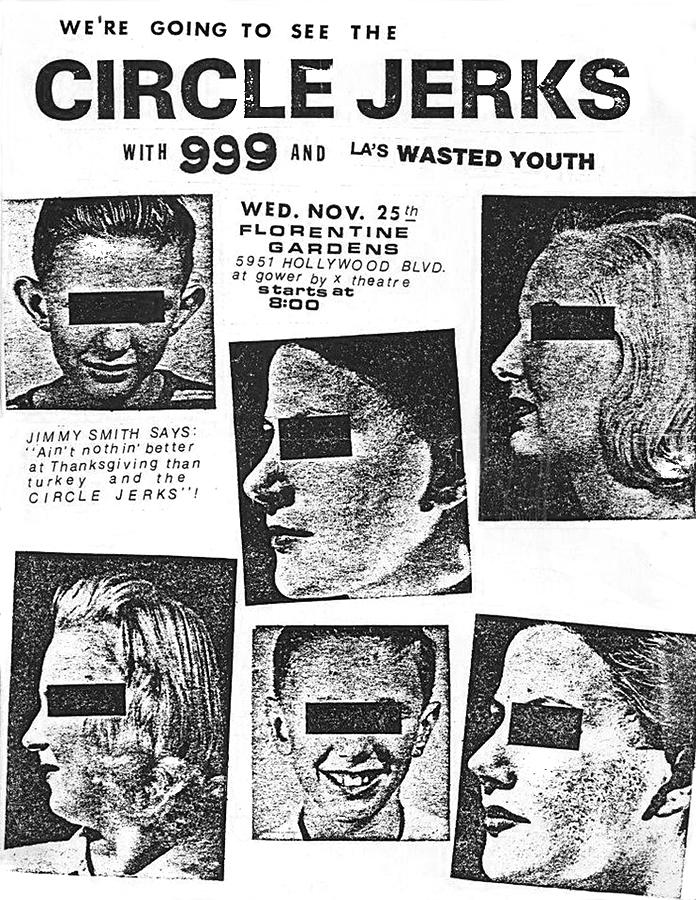
The band was in perfect form, no song was longer than a minute and a half, it was all wild thrashing and bloody crunch. Morris was positively maniacal, eyes bulging and veins popping out. The concrete floor was slick with spilt beer, concert goers were sliding back and forth in front of the frenzied band.
The other distinct memory I have of Black Flag at its inception involved Tower Records, the biggest record store on the planet. Located on the world famous Sunset Blvd., the store went out of business in 2007. In the late ’70s it carried records from all across the world, including a small selection of punk rock records, mostly from the UK.
In 1979 Black Flag released their first single, Nervous Breakdown, and I was first in line to purchase it at Tower Records. OK, I was the only one in line to buy it. Buying that 45 single at Tower Records was a comedic affair. Most of the staff at Tower were musicians, or were connected in someway to LA’s music scene. When I placed the record on the counter to pay, the young cashier looked at the 45 single in its paper sleeve—he had a mischievous twinkle in his eye.

Before taking my money, the cashier slipped the vinyl record from its sleeve, placed it on a record player that was hooked up to the store’s speakers, placed the needle on the disc, and cranked up the volume. As the discordant noise hammered the store’s clientele, they made a mad dash for the exit. The store was instantaneously emptied of all customers. Such was the power of punk’s pleasing and melodious sounds.
There’s no single authoritative version of early punk rock history. A multitude of non-doctrinaire individuals were involved in the movement, and they all had different concepts and visions. I’m just another voice in that cacophonous saga. As an artist and amateur historian moving through the original punk circles of the late 1970s and early 1980s, it wasn’t required that I like everyone… but it was essential for me to be observant.
Despite the unwelcome dangers encountered in LA punk’s dystopianism, there was a certain exalted glory to it all. It was a crucible, where souls received severe tests. I met many unscathed stoics who remained human… in the warrior poet tradition, impervious to the great unraveling. Each and every character in that mad parade had their place, and helped to comprise the whole. I still cherish them.
Others were not so lucky. They capitulated to indigestible moral nihilism, heroin abuse, drunkenness, amorality, and other forms of mental weakness… like the pursuit of stardom. I’m still trying to forget them.
Regrettably, due to his proclamation about wanting “an army of Luigis,” Keith Morris has become one of those I would like to forget.




